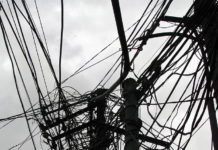James Montgomery
Yesterday President Obama spoke at Georgetown University about his plans to broadly address climate change. Ahead of his actual talk, the White House released the gist of what he would propose.
- The EPA, working with states, industry, and other stakeholders, will establish new carbon pollution standards. “Tough new rules” will be established similar to those that exist for toxins like mercury and arsenic. These new rules, as anticipated, will target existing power plants as well as new ones.
- The federal government will make available up to $8 billion in loan guarantees for “advanced fossil energy” and efficiency projects broadly defining upgrades that improve power system efficiency, CO2 capture, and plant availability; examples include “clean coal,” synthetic gas, better high-temperature materials, and improved turbine designs.
- The Department of the Interior (DOI) will be pressed to permit enough renewables projects (e.g. wind and solar) on public lands by 2020 to power 6 million homes. The DOI also will designate the first-ever hydropower project for priority permitting, and establish a new goal of 100 MW of renewables on federally assisted housing by 2020 (while maintaining a commitment to deploy renewables on military installations).
The DOI has already been moving forward on the renewables-on-public-lands front. Last summer it broadly designated 285,000 acres of public land for solar development in six Western states, potentially home to more than 23 GW of development enough to power 7 million American homes. And three weeks ago it approved three renewable energy projects in the southwest U.S.: the 350-megawatt Midland Solar Energy Project and the 70-MW New York Canyon Geothermal Project in Nevada, and the 100-MW Quartzsite concentrated solar energy (CSP) project in Arizona, collectively representing up to 520 MW, enough to power nearly 200,000 homes.
(Note, however, that these household-serving numbers aren’t so easily interpreted it’s unclear whether it represents the delivery from peak generation of solar and/or wind combined (or either), or whether and how that’s in combination with whatever other generation is required to join them. Obama’s pre-released statement doesn’t clarify if or how other energy sources will be incorporated into that directive.)
Other directives on Obama’s agenda include making commercial, industrial, and multifamily buildings at least 20 percent more efficient by 2020; and reducing carbon pollution by at least 3 billion metric tons cumulatively by 2030 more than half the annual carbon pollution from the U.S. energy sector through efficiency standards for appliances & federal buildings.
That’s one-third of Obama’s Climate Action Plan. Another part is more related to infrastructure than energy, and deals with mitigation rather than prevention: directing agencies to better support local climate-resilient investments, strengthen communities against future extreme weather and climate impacts (using Hurricane Sandy’s impact as a touchstone), create sustainable and resilient hospitals, better educate farmers, ranchers, and landowners in “agricultural productivity,” and launch a National Drought Resilience Partnership to minimize vulnerability to catastrophic fire.
Yet another thrust of Obama’s plan looks beyond our borders: committing to expanding new and existing international initiatives, including bilateral initiatives with China, India, and other major emitting countries; a call for an end to U.S. government support for public financing of new coal-fired powers plants overseas (with a few exceptions for efficiency in poor countries, and facilities with carbon capture and sequestration); and expanding government and local community planning and response capacities.
We’ll be updating this story throughout the days ahead with analysis of the President’s plan, and most importantly what happens next how it will eventually translate into action and legislation, and what might that journey entail.
Jim Montgomery is Associate Editor for RenewableEnergyWorld.com, covering the solar and wind beats. He previously was news editor for Solid State Technology and Photovoltaics World, and has covered semiconductor manufacturing and related industries, renewable energy and industrial lasers since 2003. His work has earned both internal awards and an Azbee Award from the American Society of Business Press Editors. Jim has 15 years of experience in producing websites and e-Newsletters in various technology.
This article was first published on RenewableEnergyWorld.com, and is reprinted with permission.








